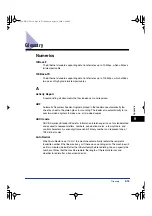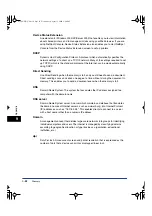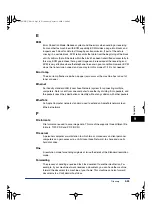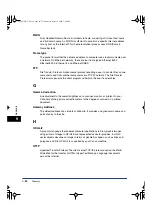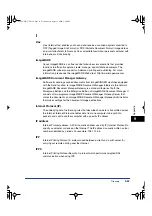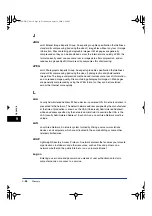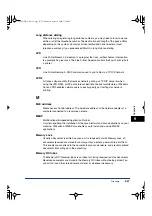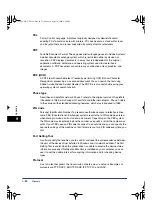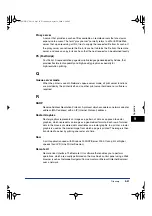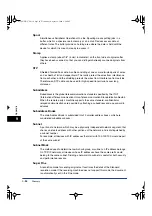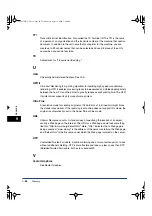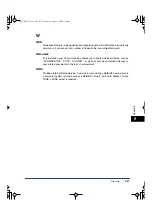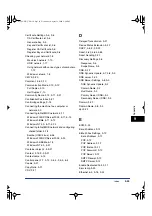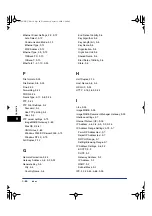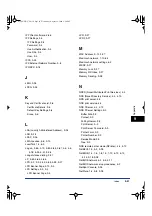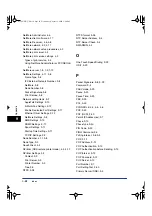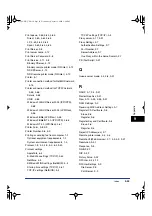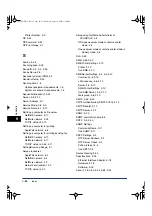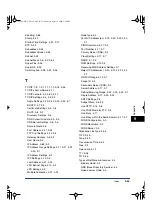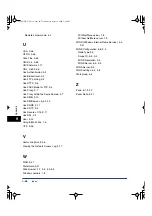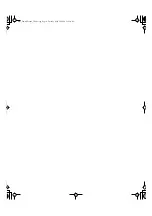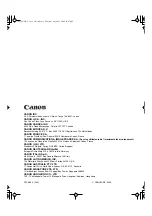
Glossary
9-33
9
Appendix
Scope ID
The Scope ID is a character string value that is appended to the NetBIOS name and
used for all NetBIOS names for TCP/IP communications. It provides a way for a
computer to communicate only with others sharing the same Scope ID.
Sender's Name
Your personal or organization's name. The sender's name, fax number, date, and time
sent are printed on each page that you send. You can register up to 99 sender names
that are selected using the TTI selector, before sending.
Sequential Broadcast
Sequential Broadcasting enables you to send a scanned document to up to 256
destinations simultaneously. If you frequently send documents to the same
destinations, it is highly recommended that you register the numbers as a group in a
one-touch button for group dialing.
SLA
Salutation Architecture. An open standard for locating and controlling scanners,
printers, copiers, fax machines, multifunction devices, and other peripherals across
the Internet, intranet, or across networks, regardless of operating system, network
protocol, or product class.
SMB
Server Message Block. A protocol that provides file and printer sharing over a
network for Windows computers.
SMTP
Simple Mail Transfer Protocol. A TCP/IP protocol for sending messages from one
computer to another on a network.
SNMP
Simple Network Management Protocol. The network management protocol of TCP/IP.
In SNMP, agents, which can be hardware as well as software, monitor the activity of
the various devices on the network and report to the network console workstation.
SNTP
Simple Network Time Protocol. A simplified version of NTP. This protocol enables
computers in a network to synchronize their system times with a public time server
located around the world. The time public NTP servers provide is generally accurate
to within milliseconds.
Source Routing
Normally, a host has no control over the route taken by a packet it sends. Source
routing is a technique whereby the sender of a packet can specify the route that a
packet should take through the network, to its destination.
E210_NWG_US.book Page 33 Wednesday, August 18, 2004 3:40 PM

